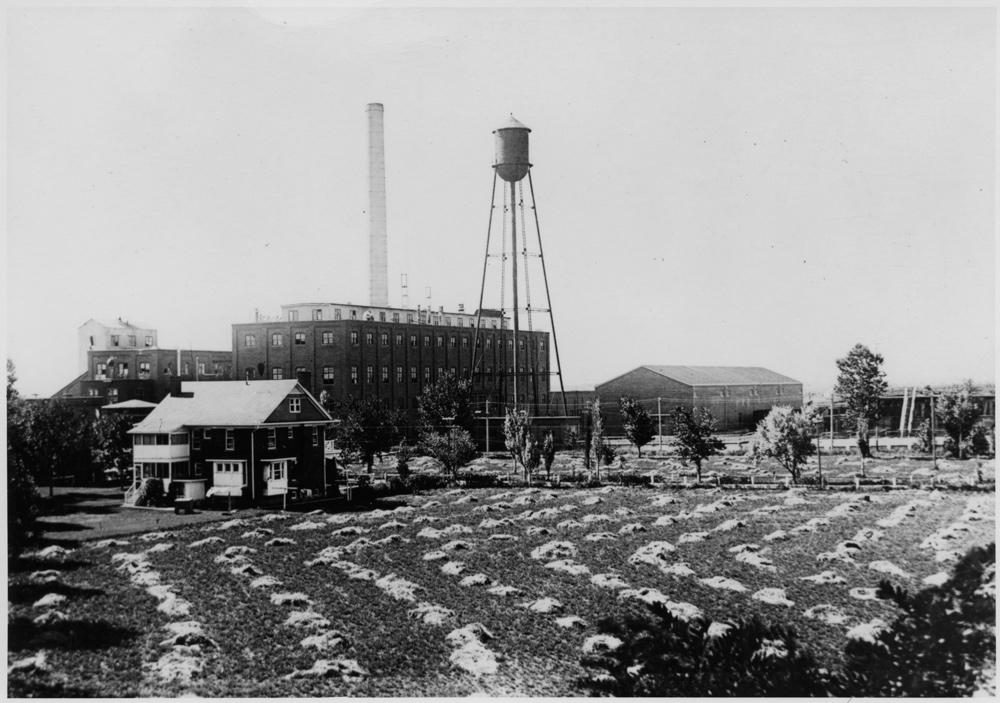German Congregational Zion Church (Zion United Church of Christ)
Full Article
The German Congregational Zion Church of Sterling (428 Chestnut St, Sterling, CO 80751) was established by Germans from Russia in 1911, and the church building itself was constructed in 1926–27. The oldest church in Sterling founded by the German Russian community, it helped immigrants hold on to their language and traditions. Today few material artifacts remain from the early years of German Russian settlement in Colorado, leaving the church as an important reminder of their role in the region’s history.
The Congregation and the Church
German Russians form one of the largest ethnic groups in northeastern Colorado. When sugar beet cultivation started in Colorado in the early twentieth century, they were recruited in large numbers to work in the beet fields. By 1910 they were the largest and most important labor force in Colorado’s beet fields. By 1920 there were more than 20,000 first- and second-generation German Russians in Colorado, including more than 1,100 in Logan County. They worked in the beet fields during the summer and often did construction during the winter, gradually saving enough money to rent or buy their own farms. In Sterling a community called the “Russian Corner” developed in the southwestern part of the city.
Two-dozen German Russian congregants in Sterling (twelve men and twelve women) gathered to organize the German Congregational Zion Church on December 12, 1911. Under the leadership of Reverend Henry Kauerz of Fort Morgan, the congregation started out with an average attendance of about fifty at its services. Soon the congregation secured its own space for worship when it paid $2,000 for a former Catholic church at the corner of North Fifth and Chestnut Streets. For the second half of 1912 the congregation had a student minister, Reverend Jacob Wagner. It finally secured the services of its first full-time minister, Reverend Phillip Croissant, in December 1912.
The German Congregational Zion Church worshipped in the former Catholic church until 1926, when Reverend Theodore Fünning led a drive to construct a new church building on the same site. Contributions from church members and the local Christian community as well as a mortgage from the Congregational Church-Building Society covered construction costs of almost $20,000. Local contractor L. J. Brown designed the Gothic Revival building.
Dedicated on February 20, 1927, the church has been used for services ever since. The main floor originally had two aisles to facilitate gender-organized seating, with men on the pulpit side, women on the organ side, and families with young children in the middle. After gender-organized seating faded out of use, about 100 chairs were removed and the remainder realigned to form a single center aisle.
Traditions and Changes
Because the congregation came from Sterling’s German Russian community, church services were conducted exclusively in German until 1936. That was the last year Confirmation classes were given in German as well as the first year the sermon was preached in English. The sermon was offered in both German and English for nearly a decade. In 1945 church services converted solely to English because most church members spoke English as their first language by that time and public use of German was frowned upon during World War II.
Two major changes occurred in 1960. The congregation voted to join the United Church of Christ, which had just formed from the merger of the German Congregational, Christian Congregational, and Evangelical and Reformed denominations. As a result, the congregation’s name changed to the Zion United Church of Christ. In addition, the church building received a major renovation in 1960, with a new kitchen, back entry, and front entrance on Chestnut Street that improved accessibility.
The Zion United Church of Christ still has congregants descended from its original German Russian members and continues to celebrate its German Russian origins, even though it has many new members from different ethnic backgrounds. The church hosts an annual German dinner with traditional German foods. It also includes German-language prayers and hymns in its services.




